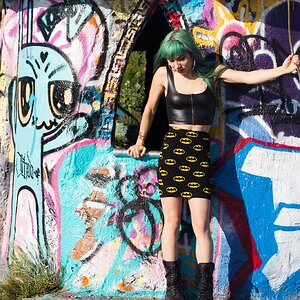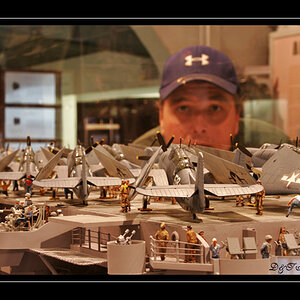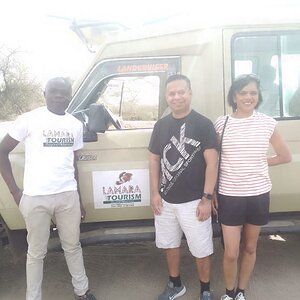Navigation
Install the app
How to install the app on iOS
Follow along with the video below to see how to install our site as a web app on your home screen.

Note: This feature currently requires accessing the site using the built-in Safari browser.
More options
You are using an out of date browser. It may not display this or other websites correctly.
You should upgrade or use an alternative browser.
You should upgrade or use an alternative browser.
How "You" Judge Exposure
- Thread starter smoke665
- Start date
ac12
Been spending a lot of time on here!
- Joined
- Dec 5, 2017
- Messages
- 2,637
- Reaction score
- 911
- Location
- SF Bay Area, California, USA
- Can others edit my Photos
- Photos NOT OK to edit
On the dSLR, I look at the back screen after the shot, and see if it looks OK.
If there are "blinkies," I evaluate where in the image the "blinkies" are.
The problem with the dSLR, is the back screen can be unusable in the bright sun. Evaluating exposure in the sunlight is really hard. So, I cross my fingers, and I trust my technique, until I can see what I shot.
On my mirrorless, the EVF reflects the exposure.
So, I look at the subject in the EVF and can adjust the exposure in real time.
I can see and adjust for the bright or dark scenes in the EVF, which I would not catch in the dSLR until I look at the shot I just took, on back screen.
I sometimes "expose to the right." But that requires a more deliberate shot, because I can easily OVER expose to the right, if I am not careful. The problem is, on the small back screen, it is difficult to see the small areas that get blown out.
Example, faces in a school concert, look OK on the back screen. But on the computer, many of the faces are "blown out."
One of the things that I do, is I do a test shot BEFORE the event.
This lets me see if I have the exposure, exposure compensation, white balance, etc. in the ball park.
If there are "blinkies," I evaluate where in the image the "blinkies" are.
The problem with the dSLR, is the back screen can be unusable in the bright sun. Evaluating exposure in the sunlight is really hard. So, I cross my fingers, and I trust my technique, until I can see what I shot.
On my mirrorless, the EVF reflects the exposure.
So, I look at the subject in the EVF and can adjust the exposure in real time.
I can see and adjust for the bright or dark scenes in the EVF, which I would not catch in the dSLR until I look at the shot I just took, on back screen.
I sometimes "expose to the right." But that requires a more deliberate shot, because I can easily OVER expose to the right, if I am not careful. The problem is, on the small back screen, it is difficult to see the small areas that get blown out.
Example, faces in a school concert, look OK on the back screen. But on the computer, many of the faces are "blown out."
One of the things that I do, is I do a test shot BEFORE the event.
This lets me see if I have the exposure, exposure compensation, white balance, etc. in the ball park.
Last edited:
- Joined
- Mar 29, 2016
- Messages
- 14,825
- Reaction score
- 8,265
- Can others edit my Photos
- Photos NOT OK to edit
I start by thinking about the final image and where are my exposure related priorities, then spot meter in camera for highlight control, shadow detail, or a middle gray depending on the subject and image intent. examples: a white car or bird gets metered for highlights, a black dog I make sure to meter for some detail in the black fur. Shooting people, family on the run I might occasionally meter my hand in the viewfinder and center the needle.. I personally don't use a histogram until I see it in post. With digital I more often meter to preserve highlight detail. Let's admit that today's sensors have amazing latitude if you don't blow out either end of the range. With film I'm generally more slow and careful with exposure if the camera has a trusted meter. I love the predictable results of careful exposure. For cameras with no good onboard metering I use a phone app or use sunny 16 estimates which also work well after some practice.
Good points, things I also do. It's easy to worry about the highlights so much that you forget the details in the shadows.
I sometimes "expose to the right." But that requires a more deliberate shot, because I can easily OVER expose to the right, if I am not careful. The
I generally try to ETTR, I find that doing so gives me more data to work with in the highlight range. Maybe it's my imagination, but if I do it right, it seems like the colors pop.
Strodav
No longer a newbie, moving up!
- Joined
- Nov 25, 2018
- Messages
- 742
- Reaction score
- 400
- Location
- Houston, Tx
- Can others edit my Photos
- Photos NOT OK to edit
My D850 is measured at 14.8 stops of DR at ISO 64, but there are still times when that's not enough to capture my subject and background. Blown out highlights are more objectional than buried shadows to most people, so ETTR to avoid blown highlights at the expense of shadows is an accepted technique. Knowing that you have about 1/3 of a stop above the blinkie on most cameras gives you confidence you can go right up to the blinkie and maybe just a smidge more and still preserve detail in the highlights. If you capture the highlight detail, you can always adjust the brightness in post. If the highlights are blown out, there's nothing you can do. This is very important to me as a birder shooting subjects like Snowy or Great Egrets on darker backgrounds. You want to see the detail in the feathers.Let's say you use to shoot with a camera that had 10 stops. Now you upgraded to a camera that has 13 stops. Why would you worry about a 1/3 of a stop ETTR?
Sharpshooterr
No longer a newbie, moving up!
- Joined
- Feb 5, 2019
- Messages
- 378
- Reaction score
- 106
- Location
- NorCal, North Bay, USA
- Can others edit my Photos
- Photos OK to edit
Most of the time I let my camera do all the work especially if the shooting is fast and furious. The modes change by the type of shooting.
If a shot has to be just right then I can always bracket and work it out in PP.
Of course sometimes I gotta go with experience, like a white bird in the sun, a bright full moon or fireworks but for normal shots, 90% of the time the camera is better than I am and 100X faster, it is after all, a computer!
If a shot has to be just right then I can always bracket and work it out in PP.
Of course sometimes I gotta go with experience, like a white bird in the sun, a bright full moon or fireworks but for normal shots, 90% of the time the camera is better than I am and 100X faster, it is after all, a computer!
- Joined
- Mar 29, 2016
- Messages
- 14,825
- Reaction score
- 8,265
- Can others edit my Photos
- Photos NOT OK to edit
Most of the time I let my camera do all the work especially if the shooting is fast and furious. The modes change by the type of shooting.
I've made a good effort to learn what all those settings available in the K1MII do. Knowing, let's me tailor them for shooting outside where everything changes rapidly. As you say, the computer is much faster than I could ever be. In the controlled environment of studio I'm full manual.
mrca
No longer a newbie, moving up!
- Joined
- Mar 13, 2018
- Messages
- 872
- Reaction score
- 280
- Can others edit my Photos
- Photos NOT OK to edit
With film, when metering for say land/seascapes and have time, I spot meter darkest shadow I want detail, brightest highlight I want detail, what is that range? In film, I place the shadow in zone IV, no not zone III, this way I get a better negative and most times the way film handles highlights leaves plenty of headroom. If I want a particular tone on a particular zone, will place it there. With digital, my meter is calibrated to my sensor noting PRECISELY where clipping is. Again check shadow and highlights and usually place highlights on high dynamic scenes just below clipping where I can easily recover them in post. This gives best shadow detail since lifting shadows can produce noise darkening does not. Out of camera file doesn't look great, but with post it produces the best possible file. If a smaller dynamic range scene, can move the highlights down a bit. With studio portraiture, all lights/reflectors ratios are precisely set with an incident meter as is the camera setting. The background is a specific reflective reading delta from the subject incident to yield a desired bg tonality/shade of gel. The zone system isn't rocket science. Takes less time than chimping. I am not one to pull exposure out of my ... nether regions. I can do it quickly, precisely and repeatably and a meter makes it possible. Sorry, I know you can get close without it, but chimping endlessly is for someone with lots of time and room for error. My most dreaded words, you have 5 minutes. One of my trademark shots was lit and captured after hearing that and only captured because of my meter quickly dialing in the shot. It went from high key / white bg to low key/ black bg without changing the pure white bg. High key a magazine cover, low key on his wall.
Grandpa Ron
Been spending a lot of time on here!
- Joined
- Aug 9, 2018
- Messages
- 1,155
- Reaction score
- 700
- Can others edit my Photos
- Photos OK to edit
As already mentioned I let the camera do the work . The gurus who wrote the camera software know the camera and are pretty good at it. If it is not quote right post processing usually will fix it.
In the rare case that I am asking the camera to do some thing it does not like, I switch to manual use my best guess and adjust the exposer based on what I see. It is digital, you can tweak as many times as you like then touch it up in post processing.
Of course a lot depends on how you judge the your photographs.
In the rare case that I am asking the camera to do some thing it does not like, I switch to manual use my best guess and adjust the exposer based on what I see. It is digital, you can tweak as many times as you like then touch it up in post processing.
Of course a lot depends on how you judge the your photographs.
AlanKlein
Been spending a lot of time on here!
- Joined
- Nov 24, 2011
- Messages
- 2,263
- Reaction score
- 815
- Location
- NJ formerly NYC
- Website
- www.flickr.com
If it's an important shot, bracket.
- Joined
- Mar 29, 2016
- Messages
- 14,825
- Reaction score
- 8,265
- Can others edit my Photos
- Photos NOT OK to edit
gurus who wrote the camera software know the camera and are pretty good at it.
And in rapidly changing light conditions, or movement it's a gazillion times faster than my old brain can react.
If it's an important shot, bracket.
Another tool in the box, but sometimes you don't have that option, especially in portraits or fast moving subjects. Like light, expressions change rapidly, as does the scene with movement. Experience, and knowledge of your camera functionality goes a long way in choosing the correct method on the fly.
AlanKlein
Been spending a lot of time on here!
- Joined
- Nov 24, 2011
- Messages
- 2,263
- Reaction score
- 815
- Location
- NJ formerly NYC
- Website
- www.flickr.com
I was referring to the landscapes that I usually shoot. I should have clarified that. When I shoot roll film like 120, it's easy and relatively cheap. Now that I'm shooting 4x5 more often, I basically stopped bracketing. I'm just more careful with trying to get the exposure settings right the first time.And in rapidly changing light conditions, or movement it's a gazillion times faster than my old brain can react.
Another tool in the box, but sometimes you don't have that option, especially in portraits or fast moving subjects. Like light, expressions change rapidly, as does the scene with movement. Experience, and knowledge of your camera functionality goes a long way in choosing the correct method on the fly.
Actually, what I've been doing more often is to shoot the same scene with different films but using the same exposure calculations. For example Ektachrome and Tmax or Velvia and Provia. I'm bracketing films, not exposure.
AlanKlein
Been spending a lot of time on here!
- Joined
- Nov 24, 2011
- Messages
- 2,263
- Reaction score
- 815
- Location
- NJ formerly NYC
- Website
- www.flickr.com
I'm bracketing film because I'm trying to learn which films work better in different lighting conditions. I never did that with 120 roll film, But it's kind of natural with 4x5 sheet film.
mrca
No longer a newbie, moving up!
- Joined
- Mar 13, 2018
- Messages
- 872
- Reaction score
- 280
- Can others edit my Photos
- Photos NOT OK to edit
Smoke. I don't want blown out highlights or excessive noise in shadows from having to recover in post. I use a modified "zone system" on every shot on the fly/run and gun. Caucasian skin is zone VI, one stop brighter than zone V middle gray, the reading from a meter including the camera meter. I spot focus and meter from one spot that I place just below the eye, focusing there gets the most important element in focus (in run and gun, back button auto focus), the eyes, adding about 1 stop of light with shutter or aperture wheels NAILS exposure, click. That works with dark or light scenes that will fool a meter every time. It takes only a second or 2. It keeps it simple, kiss, the same approach on every shot, no compensation dial adjustment to be forgotten to screw up the next shot, no changing between exposure modes, no hoping the camera gets it right. I don't have the luxury not to. And I KNOW I nailed exposure and focus.
mrca
No longer a newbie, moving up!
- Joined
- Mar 13, 2018
- Messages
- 872
- Reaction score
- 280
- Can others edit my Photos
- Photos NOT OK to edit
Alan, I am considering 4 x 5 myself. You are so right, the film itself is crazy expensive. I do my own developing, but even so, you're starting from a pretty high expense level. I don't bracket on medium format and there I often use a 3200 speed film where my target is precisely one stop overexposed. For that, I carefully meter with an incident meter. But in 35mm, I shoot HP 5 which five stops overexposed, is nearly identical to a proper exposure. I make sure I have exposed for the shadows and there is no way I'm five shots overexposed. For street, with zone focus, it turns my nikon into a fast reacting point and shoot. In 4 x 5, that should minimize the size of the grain flakes, relative to the size of that huge negative. It is why my preferred film back is a 645 with 3200 because that is the size grain. I like relative to the negative size. For those who don't shoot film, a particular film stock uses the same emulsion from 35mm 120 and 4 x 5. So although the grain remains the same size, it is smaller in relationship to the entire image on the larger format films. Allen, keep us posted on how 4 x 5 is working out for you. You are definitely pushing he envelope.
AlanKlein
Been spending a lot of time on here!
- Joined
- Nov 24, 2011
- Messages
- 2,263
- Reaction score
- 815
- Location
- NJ formerly NYC
- Website
- www.flickr.com
Isn't 3200 pretty high? It has a lot of grain. Do you need so much speed?Alan, I am considering 4 x 5 myself. You are so right, the film itself is crazy expensive. I do my own developing, but even so, you're starting from a pretty high expense level. I don't bracket on medium format and there I often use a 3200 speed film where my target is precisely one stop overexposed. For that, I carefully meter with an incident meter. But in 35mm, I shoot HP 5 which five stops overexposed, is nearly identical to a proper exposure. I make sure I have exposed for the shadows and there is no way I'm five shots overexposed. For street, with zone focus, it turns my nikon into a fast reacting point and shoot. In 4 x 5, that should minimize the size of the grain flakes, relative to the size of that huge negative. It is why my preferred film back is a 645 with 3200 because that is the size grain. I like relative to the negative size. For those who don't shoot film, a particular film stock uses the same emulsion from 35mm 120 and 4 x 5. So although the grain remains the same size, it is smaller in relationship to the entire image on the larger format films. Allen, keep us posted on how 4 x 5 is working out for you. You are definitely pushing he envelope.
Most reactions
-
 423
423 -
 297
297 -
 285
285 -
 272
272 -
 227
227 -
 204
204 -
 186
186 -
 182
182 -
 170
170 -
 166
166 -
 147
147 -
 133
133 -
 120
120 -
 95
95 -
I
94
Similar threads
- Replies
- 0
- Views
- 952
- Replies
- 7
- Views
- 1K
- Replies
- 3
- Views
- 2K
- Replies
- 0
- Views
- 1K

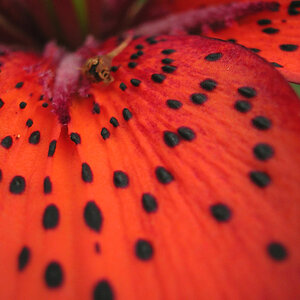
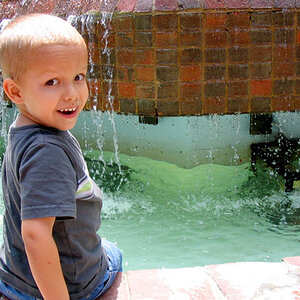
![[No title]](/data/xfmg/thumbnail/36/36421-843e629a8c32ff091e337e6880f0c323.jpg?1619737565)
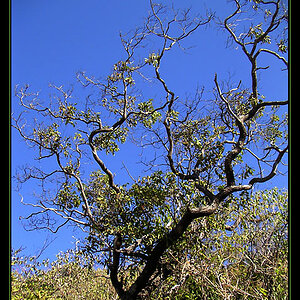
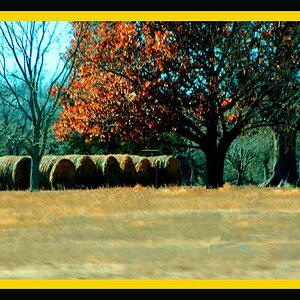
![[No title]](/data/xfmg/thumbnail/42/42253-fef7e43227f484b1a95dd6d85c03bd40.jpg?1619740063)
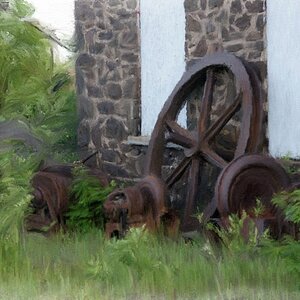
![[No title]](/data/xfmg/thumbnail/42/42254-5375170ab7f7e4b2df62d461abe498b2.jpg?1619740063)
![[No title]](/data/xfmg/thumbnail/36/36423-4f4abd5f32da2219d4967c7a13b07a8c.jpg?1619737566)
